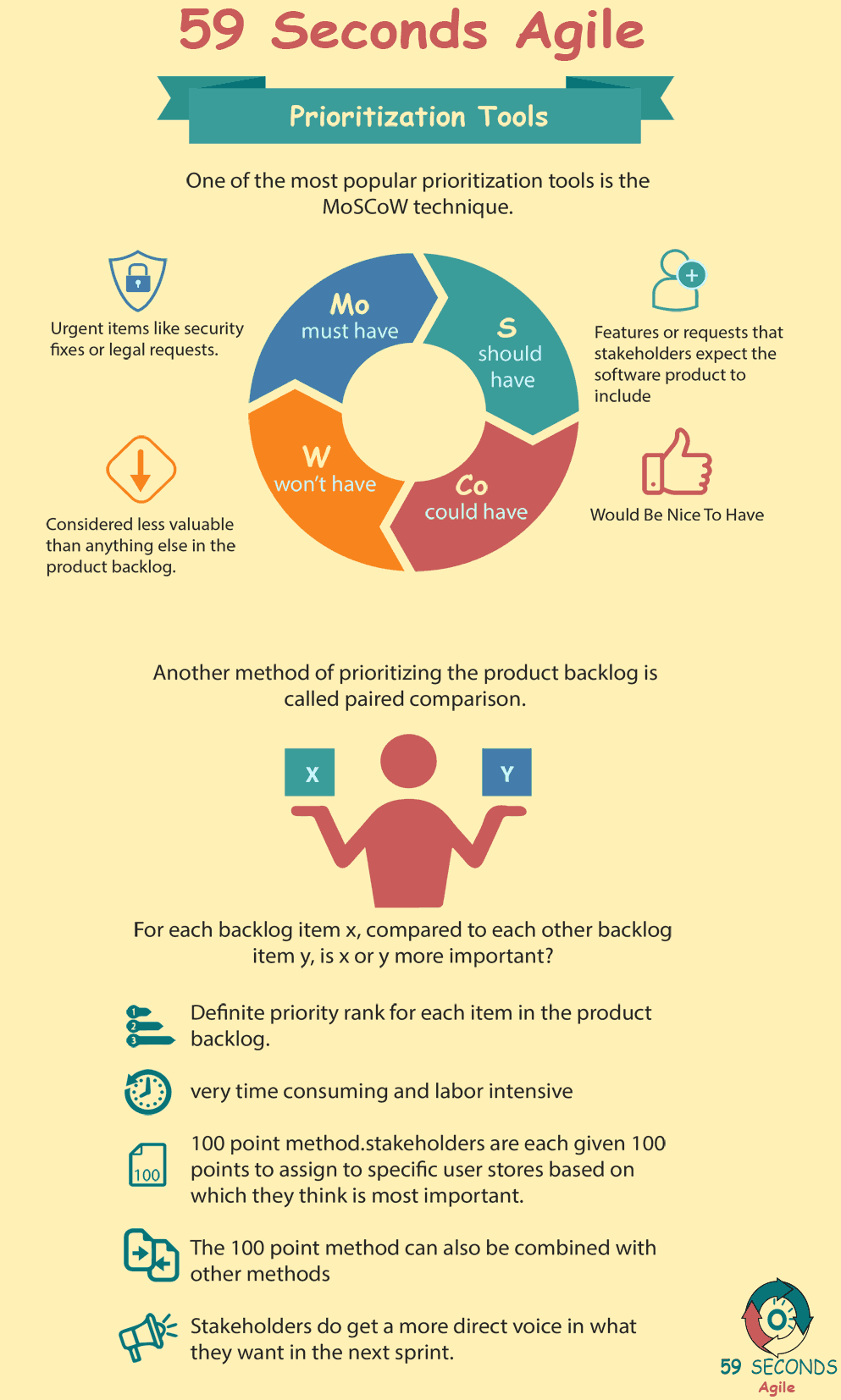
Product Backlog Prioritisation For Product Owners – Part 2
The model breaks user stories into 4 categories that the customer uses to describe them:
● Performance – the new feature increases the satisfaction of a customer
● Must-Be – the feature is considered a standard features to meet market expectations and competition
● Attractive – unexpected features that surprise and delight users
● Indifferent – features that do not really add or subtract from the product
Since this is based on questionnaires this is a great model when testing prototypes or existing versions. This approach is based solely on customer’s reactions and thus needs customer or tester input to continue to help develop the product and should be used in small companies or in instances where there are few stakeholders but lots of potential customers.

Paired Prioritization
It’s up to the product owner to work with stakeholders to get in the user stories to meet expectations. The quick way to align stakeholders is by doing paired prioritization. Paired prioritization is putting one feature “against” another feature and forcing individuals to choose which one they think is most important.
The team cannot execute successfully on both of the features, so the stakeholder must choose one. This forces the person into a position of choice and by making the comparisons simple, just 2 different things, it makes it easier for them to come to a decision. You can do this multiple times in a round robin elimination style, and this will result in a complete prioritized list, taking 2 features at a time.
Our Favourite Agile Books
We found these books great for finding out more information on Agile Scrum:
100 Point Method
Another great prioritization method for prioritization is the 100 point method. In this metapproach, the product owner will lay out the features still to be done and give everyone in the room 100 points to use to “vote” on feature importance. In the end, the group then discusses the features with the highest votes and comes to a consensus regarding the highest priority features.
So now that you, the product owner, have some tools to prioritize, know that’s it’s not a perfect process. Not all stakeholders will be aligned, not all team members will see the value in a high-priority feature, and even you may question certain pushes from both the team and the stakeholders. These tools, however, will help to shape conversations and drive consensus building but at the end of the day there will be conflicts and differences of opinion, it’s up to you to help keep these conversations moving the product forward and make smart decisions along the way.

